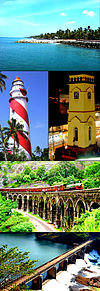
Chachipunna
It is proposed that this article be deleted because of the following concern:
If you can address this concern by , copyediting, sourcing, renaming, or merging the page, please and do so. You may remove this message if you improve the article or otherwise object to deletion for any reason. Although not required, you are encouraged to explain why you object to the deletion, either in your edit summary or on the talk page. If this template is removed, do not replace it. 
The article may be deleted if this message remains in place for seven days, i.e., after 14:53, 1 February 2025 (UTC).  If you created the article, please don't be offended. Instead, consider improving the article so that it is acceptable according to the deletion policy.
If you created the article, please don't be offended. Instead, consider improving the article so that it is acceptable according to the deletion policy.Find sources: "Chachipunna" – news · newspapers · books · scholar · JSTOR |

Chachipunna | |
|---|---|
village | |
| Coordinates: 9°5′0″N 76°54′0″E / 9.08333°N 76.90000°E | |
| Country | |
| State | Kerala |
| District | Kollam |
| Languages | |
| • Official | Malayalam, English |
| Time zone | UTC+5:30 (IST) |
| Vehicle registration | KL- 25, 80 |
Chachipunna is a small village in the Kollam (Quilon) district of India's Kerala state with a population of approximately 1000.

Geography
The village is situated 6 km southeast of Pathanapuram and 12 km northwest of Punalur, and it is considered a part of a bigger village, Punnala. It is surrounded by hills on north and south and a tributary of Kallada river flows through the village. It is connected by roads to Pathanapuram and Punalur. An aerial view of the village is available at Wikimapia.

History
Ruins of an ancient Hindu temple and houses indicate that an earlier civilization existed probably 500 to 1000 years ago. According to folk stories, the people who lived here earlier were either killed by or fled away from invaders from Tamil Nadu. These invaders were known as Thee-Vetti-Kollakkar, or attackers with fire and swords.

There is also evidence of a much older civilization in the area: swords were discovered from a burial site, which was built using granite slabs, in the 1970s, and urns or nannangadis were also found in the 1980s. These discoveries can be linked to the megalithic civilization flourished in Kerala between the 10th century BC and 5th century AD.

Most of the Christian families living here migrated from places like Kozhencheri, Kumbanadu, and Thiruvalla 50 to 70 years ago. The stones (vettu-kallu) from the ruined houses of the earlier civilization were used by some of the families to build their first homes.

Demographics
The majority of the senior inhabitants are farmers; main crops are rubber, paddy (rice), coconut, and black pepper. A good percentage of young men work in cities of North India and Middle East. The money sent back home by these emigrants brings prosperity to the village. Some of the problems the village faces are poverty, lack of industrial work, and alcoholism among men.

Institutions
The village has a primary school (Marthoma School), a bank (State Bank of India), a public library

Modern Medical Clinic
This village has a homeopathic clinic and a medical clinic -Kappithottathil Clinic & Lab.

Religions
The villagers follow Christian, Hindu and Muslim faiths. The village has four Churches, majority of Christians belongs to Mar Thoma Syrian Church and Pentecostal denominations, a Hindu Temple, a mosque and a Madrasa.

Small Scale Industry
This village has a small scale industry Koopil Sawmill.

References
See what we do next...
OR
By submitting your email or phone number, you're giving mschf permission to send you email and/or recurring marketing texts. Data rates may apply. Text stop to cancel, help for help.
Success: You're subscribed now !




